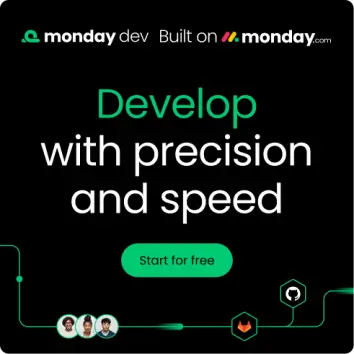We’re all familiar with the idea of having too much to do and too little time. But if this happens when we’re trying to bring products to the market, limited time and resources mean tough decisions.
What features should you prioritize? What will your customers truly value? And how can you gain control of your ever-mounting backlog? This guide introduces 10 top product prioritization frameworks you can use to make sense of your to-do list. We’ll also show you how to track your priorities (and act on them) using a structured approach in monday dev.
Try monday devWhat is a product prioritization framework?
A product prioritization framework is a systematic approach product managers can use to guide their product strategy. Instead of trying to do “all the things,” it determines the order of importance for working on potential features, tasks, or complex processes.
Once you understand your priorities, teams can make informed decisions based on criteria such as impact, feasibility, and business value.
Why is a prioritization framework important for product development?
A prioritization framework goes hand-in-hand with a product roadmap, guiding you to reach your goals by focusing on the most important tasks on your plate. Here are the top benefits you can expect when you use a defined methodology to shape your product initiatives:
Meeting customers needs
It’s easy to veer off on tangents when you’re developing, always heading toward the newest, shiniest product idea you “think” everyone wants and needs. A structured framework ensures you keep customer satisfaction top of mind. Product managers can collect and analyze customer feedback to build priority lists, ensuring you design innovative solutions for their pain points.
Reducing waste
A framework prevents your product teams from going down rabbit holes. By understanding context and avoiding common pitfalls, teams can focus on tasks that deliver value instead of wasting resources like time, money, materials, or personnel. Instead, you’ll add value to your user base in the most economic and efficient way possible.
Aligning with stakeholders
A prioritization framework is most effective when it provides visibility into your team’s efforts and allows you to track their hard work. Using a platform like monday dev, your prioritization framework will be easy to create and distribute to key stakeholders so everyone has a shared understanding of their progress. With detailed dashboards and metrics, decision-makers can confidently evaluate feature requests and update the product vision, keeping teams aligned and focused. You can try monday dev here.
Try monday devAchieving business value
A prioritization model ensures you’re focused on the right thing from a company perspective.
By gaining a deep understanding of which features will impact your bottom line, you can focus on what truly matters and drive success for your company.
Getting product to market quicker
Once you’ve created a well-oiled prioritization process (and this won’t necessarily happen overnight), it’ll become second nature to review your list of features and understand where your priorities lie. The result? Fewer conversations, meetings, and disagreements will get your product to market quicker.
10 common product prioritization frameworks
There are plenty of effective product management frameworks you could slide into your workflow. The trick is choosing the best one that suits your needs. The list below includes the pros and cons of ten popular models:
1. RICE framework
Best for: Prioritizing features based on data-driven scores
Product managers can use the RICE framework to evaluate and rank features based on Reach, Impact, Confidence, and Effort scores.
- Reach refers to how many users are affected
- Impact measures the potential benefit, such as meeting customers’ needs and business goals
- Confidence reflects how certain the estimates are (for example, 100%, 75%, 50%, etc.),
- Effort considers the resources required
A formula to calculate your RICE score is: Reach x Impact x Confidence / Effort = Total score
Overall, the RICE score ensures that teams focus on high-value, low-effort tasks.
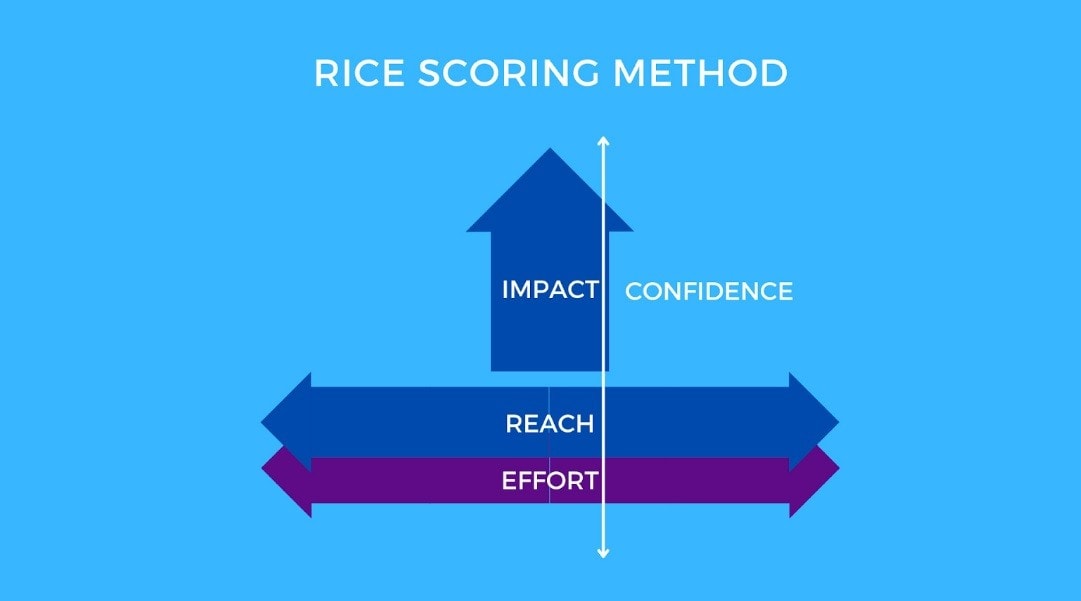
(Source: LinkedIn)
Pros
- Provides a clear, quantifiable way to prioritize features based on multiple factors.
- Helps teams make data-driven decisions
- Easy to implement and can be adapted to fit different types of product decisions.
Cons
- Requires accurate data for scoring, which can be difficult to estimate.
- The confidence score can be subjective, leading to inconsistencies.
- Can be too simplistic for complex, multi-faceted product decisions.
2. MoSCoW framework
Best for: Categorizing features quickly
Former Oracle software developer Dai Clegg developed the MoSCoW method to help his team prioritize tasks during development work on product releases. MoSCoW (which includes lowercase Os between capitals to make the acronym more memorable) requires you to place tasks into four categories:
- Must-have: Without compromise, these elements are essential for successful product development.
- Should-have: These features are important but not essential.
- Could-have: These are your nice-to-have features, desirable but not essential. Omit them if they’ll have a negative impact on cost or deadlines.
- Won’t-have: Exclude these items from your list, not necessarily permanently, but at least until the next stage.
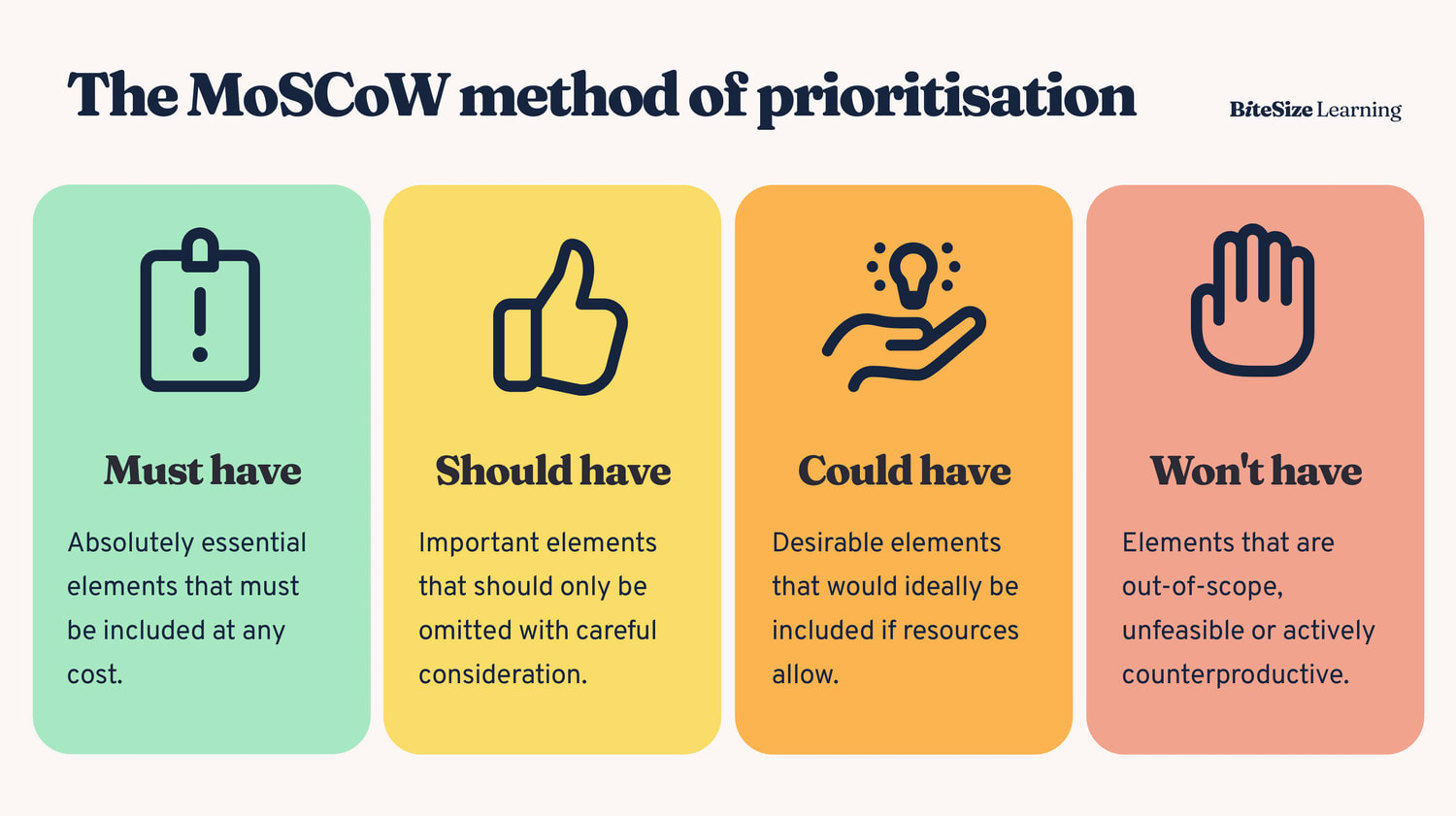
(Source: Bitesize Learning)
Pros
- Supports your teams in building a minimum viable product
- Easy to align with stakeholders
- Simple and intuitive
Cons
- Criteria for each category can be hard to define
- Subjective interpretation
- May oversimplify complex decisions
3. Value vs. complexity quadrant
Best for: Visualizing priorities
A value vs. complexity quadrant is a simple 2 x 2 effort matrix, with value (high to low) on the vertical axis and complexity (high to low) on the horizontal axis.
Using the quadrant, you’ll place your tasks into four quadrants as follows:
- High value, low complexity: Quick win features providing significant benefits with minimal effort
- High value, high complexity: These major projects offer substantial value but require significant resources and implementation time.
- Low value, low complexity: These features are typically easy to implement but provide little benefit, often handled later.
- Low value, high complexity: These are your time-waster features that offer minimal value and require considerable effort. Avoid or deprioritize these.
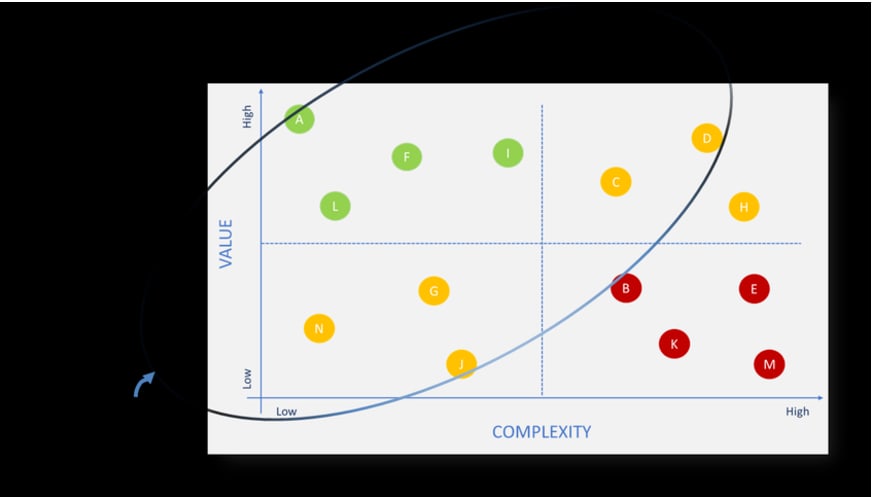
(Source: ResearchGate)
Pros
- Easy to identify low-hanging fruit to prioritize
- Excellent for visually representing your priorities
- Focuses on impact
Cons
- The 2 x 2 format lacks granularity and nuance
- Effective prioritization relies on accurate data (which may not be available for new features)
- May overlook the importance of user feedback in decision-making
4. Kano model
Best for: Understanding customer satisfaction
The Kano model is a set of guidelines developed by Japanese professor Noriako Kano and his team in 1984, grounded by the importance of customer satisfaction and delight. The Kano model is represented on a quadrant graph with two intersecting axes for fulfillment and satisfaction. Product features are graphed onto the quadrant based on five attributes:
- Must-have: These are the essential core features without which the product is a non-starter.
- One-dimensional: This attribute directly impacts core product performance, customer satisfaction, and functionality. Customers are satisfied when products fulfill this attribute and are equally dissatisfied when they don’t.
- Attractive: These are qualities that customers normally wouldn’t expect and can create a pleasant surprise or delight.
- Indifferent: This attribute has no impact on customer satisfaction or discontent. It describes details that customers either aren’t aware of or simply don’t care about.
- Reverse: This attribute could be used to describe niche products where a product delivers high satisfaction to one group of customers while leaving another highly dissatisfied.
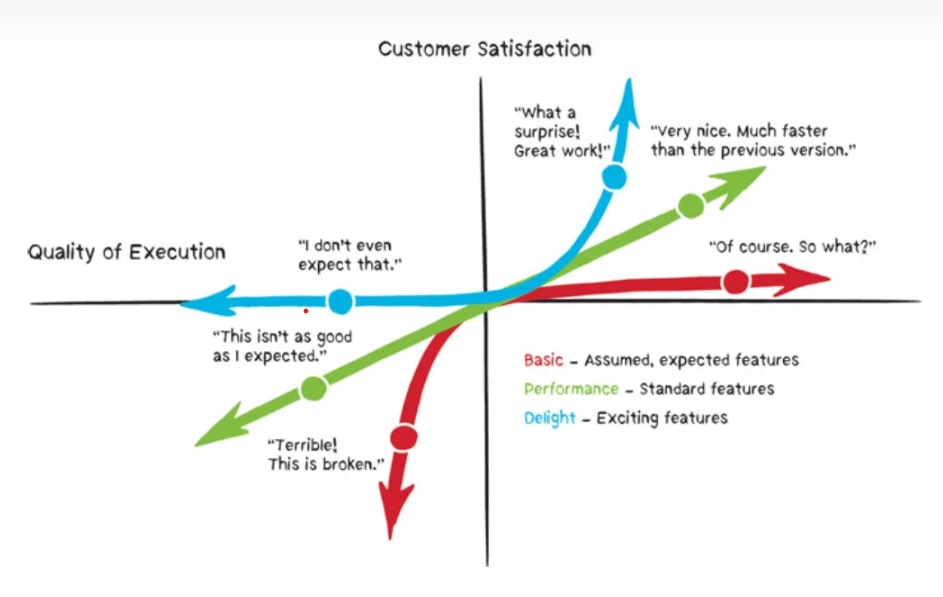
(Source: Timeular)
Pros
- Extremely customer-focused, resulting in loyalty and retention
- Identifies delight factors that create the “wow factor” in products
- Ensures basic, must-have features are not overlooked
Cons
- Relies on a commitment to collecting user feedback
- May not align with long-term business objectives
- Customer satisfaction can be difficult to measure quantitatively
5. Weighted scoring
Best for: Balancing benefits and costs using quantitative and qualitative data
Weighted scoring enables teams to list solutions based on benefits and costs, prioritizing tasks that deliver the most value. Each feature is scored based on its potential benefit (such as customer value, business impact, etc.) and the cost (such as resources, time, and effort) required to implement it.
The single scores are multiplied by assigned weights to reflect the relative importance of benefit and cost. For example, if Feature A has a benefit score of 4 (out of 5) weighted at 70% and a cost score of 2 (out of 5) weighted at 30%, the weighted score would be (4 × 0.70) + (2 × 0.30) = 3.8. Teams can identify features that offer the highest benefit for the least cost, to support efficient decision-making.

(Source: Slide Geeks)
Pros
- Incorporates qualitative and quantitative data for balanced analysis
- Adjusts scoring criteria as needed
- Considers both short-term and long-term goals
Cons
- Can be time-consuming to gather accurate data and assumptions
- Risk of overemphasizing quantifiable metrics over important qualitative factors
- Can result in overlooking intangible benefits or costs
6. ICE
Best for: Fast prioritization of high value features
The ICE framework is a speedy version of RICE, focused on developing a minimum viable product. The acronym stands for:
- Impact: The potential impact of the feature on your business goals and objectives
- Confidence: How confident you are that the feature will deliver the desired impact
- Ease: The level of effort required to implement the feature
You’ll give each of these elements a score out of 10, then take an average to obtain your overall ICE score. The aim is to prioritize initiatives that have a high potential Impact (benefit), are backed by Confidence (certainty of success), and are relatively easy to implement (Ease).
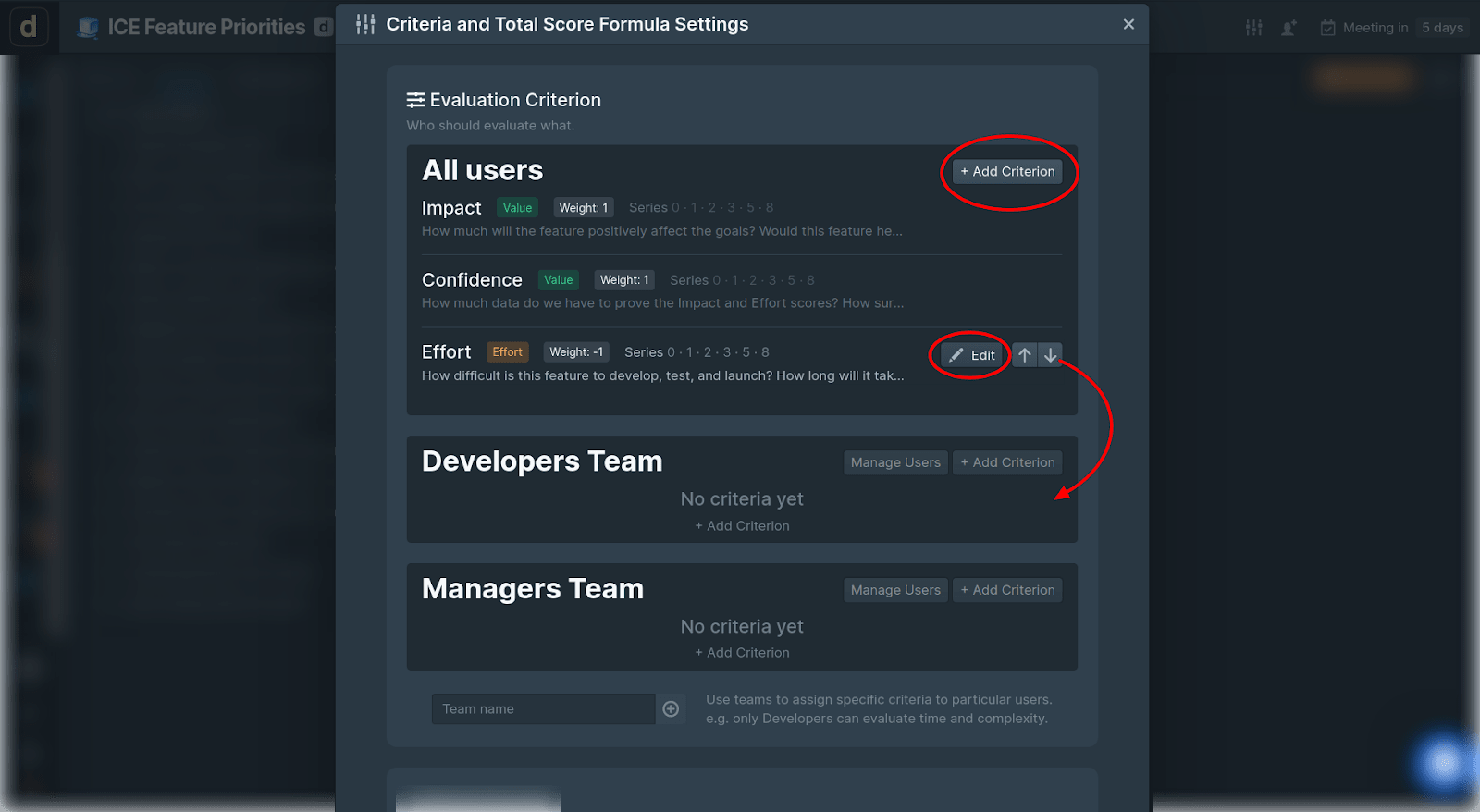
(Source: ICE)
Pros
- Extremely simple to use
- Balances impact with feasibility
- Flexible and adaptable
Cons
- Subjectivity in scoring
- Lacks detailed insight
- May lead to over-prioritizing easy wins
7. Opportunity scoring
Best for: Identifying customer need and satisfaction gaps
The opportunity score framework, also known as gap analysis or opportunity tracking, is based on the concept of Outcome-Driven Innovation (ODI), developed by Anthony Ulwik.
Your customer base is front and center of this framework. You’ll use surveys that ask them to rank various product features based on how important they find a particular feature and how satisfied they are with the current solution.
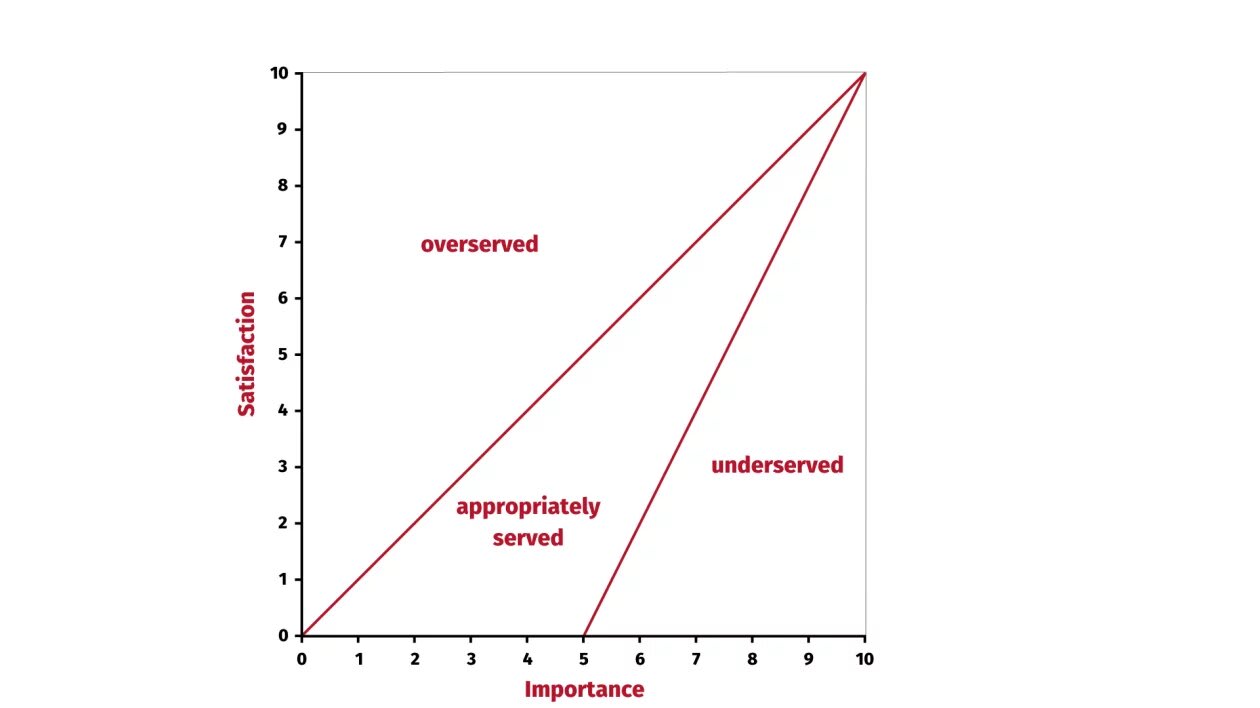
(Source: IAPM)
Pros
- Customer-centric framework
- Prioritizes based on demand
- Identifies high-impact areas
Cons
- Time-consuming to collect feedback
- Requires enough customer data to represent your entire target market
- May focus too heavily on immediate needs
8. Cost of delay
Best for: Quantifying the financial impact of delays
The cost of delay framework explores the economic impact of postponing certain feature requests in your product backlog. The longer the delay in delivering a feature, the higher the cost to the business. This concept comes from Lean and Agile methodologies and is useful for creating a sense of urgency among stakeholders and decision-makers.
To calculate the cost of delay:
- Determine the weekly cost of delay for a feature (based on lost revenue, market share, etc.)
- Estimate the backlog position or waiting time for that feature
- Multiply the weekly cost by the number of weeks in waiting

(Source: Product School)
Pros
- Encourages timely delivery
- Aligns with business value by prioritizing financial outcomes
- Justifies resource allocation to save money
Cons
- Overlooks product experience, technical debt, and strategic alignment
- Prioritizes short-term gains
- Requires accurate data to describe potential revenue or opportunity loss
9. Eisenhower matrix
Best for: Categorizing tasks by urgency and importance
The Eisenhower Matrix is a simple but effective framework for prioritizing tasks based on their urgency and importance. It is often used in personal productivity but can also be applied to product feature prioritization. Product teams will divide their tasks or feature requests into the following four categories:
- Important and Urgent: Top priority tasks you should address immediately.
- Important but Not Urgent: These tasks can be scheduled for later, but shouldn’t be neglected as they contribute to long-term goals.
- Urgent but Not Important: These tasks may seem urgent, but they don’t align with overall goals and can potentially be delegated.
- Not Important and Not Urgent: These tasks are low priority and are often worth dropping entirely.

Pros
- Prioritizes based on urgency and importance
- Helps manage time effectively
- Easy to use
Cons
- Can result in neglecting important but not urgent tasks
- May overlook long-term goals in favor of short-term urgencies
- Relies heavily on personal judgment rather than data or key metrics.
10. Impact mapping
Best for: Aligning product initiatives with business goals to ensure strategic outcomes.
Impact mapping is a strategic prioritization framework that uses a map to connect specific product features or initiatives to desired outcomes (impacts) and the people or groups that can influence those outcomes. The framework complements user story mapping to encourage teams to think about:
- The reasons why they’re building something
- Who will be affected by it
- How it’ll contribute to achieving business objectives
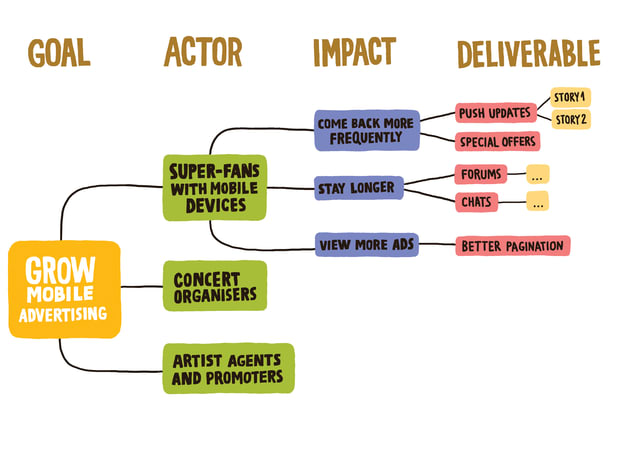
(Source: Impact mapping)
Pros
- Promotes collaboration
- Identifies the right product initiatives
- Improves focus
Cons
- Maintaining a complex impact map is time-consuming
- The technique relies on well-defined business goals
- May overlook smaller, tactical improvements
Prioritize the right product features in monday dev
Whatever framework you select to rank your priorities, you’ll need a central workspace to track the details and see each product development task through to fruition. monday dev is the perfect collaboration platform for your product development workflows. Here are the benefits you’ll experience when you manage your entire product lifecycle in monday dev.
- Gain visibility into product management tasks with multiple dashboard views. Choose from Kanban Views, Gantt Charts, or create your own custom dashboard to keep track of your tasks, owners, progress, and deadlines. You’ll have everything you need at a glance to start prioritizing your product work.
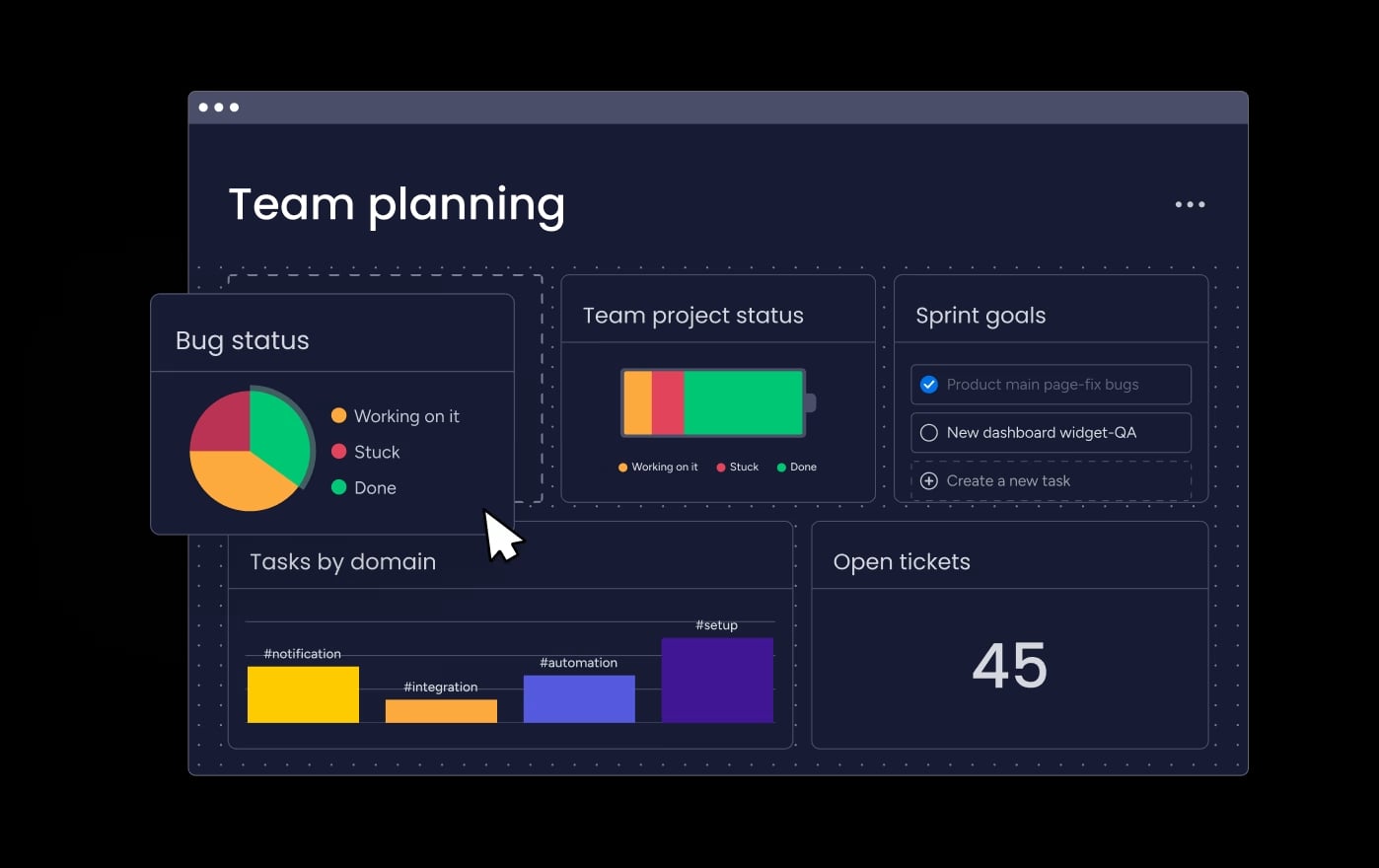
- Detect bottlenecks using our intuitive burndown charts. Track your sprint progress and compare the actual remaining effort with ideal progress to make better decisions about what to invest more time and resources on.
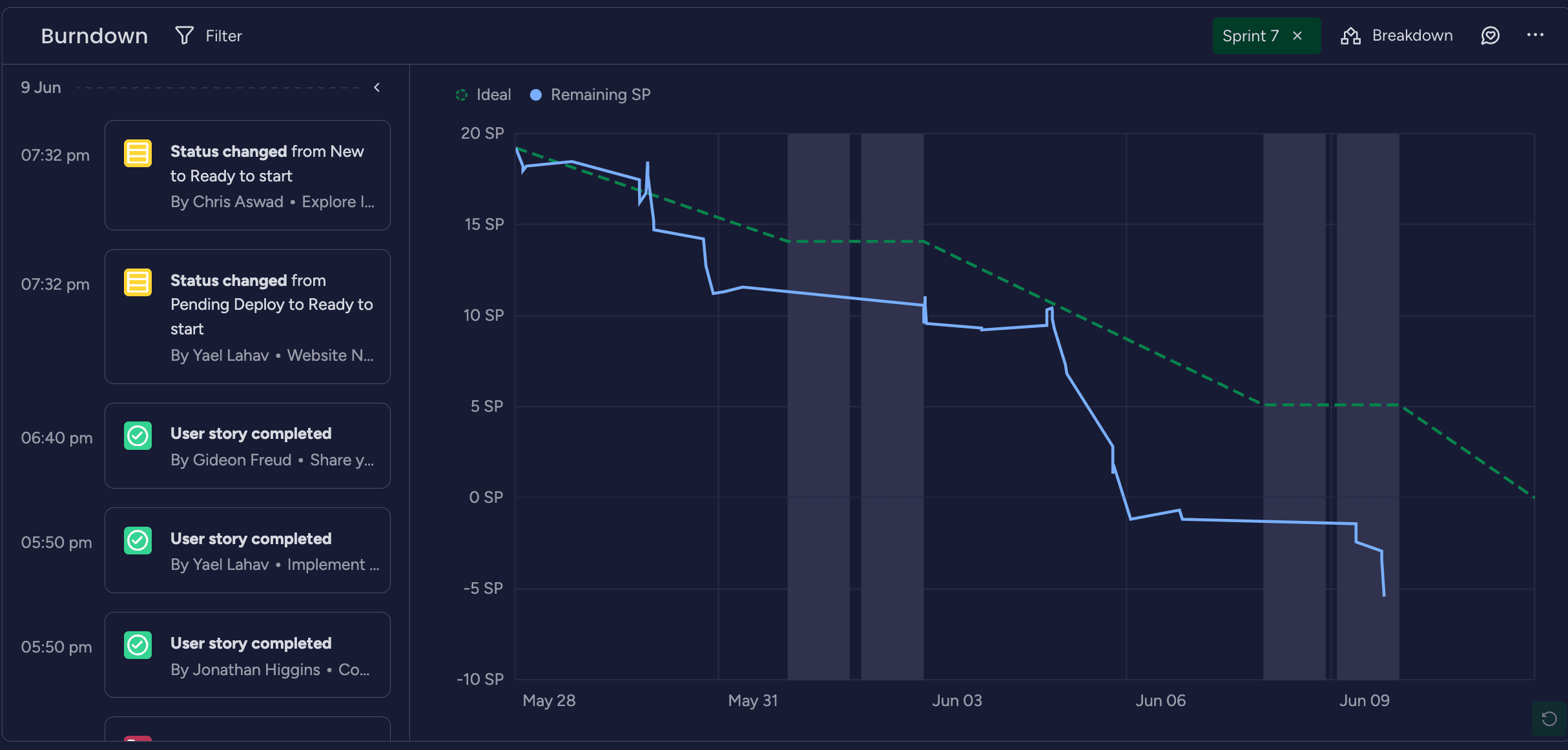
- Manage the entire lifecycle of your sprints from a single location. Whether planning sprints, daily standups, retros, or sprint reviews, it’s easy to stay organized with our rich range of boards and templates.
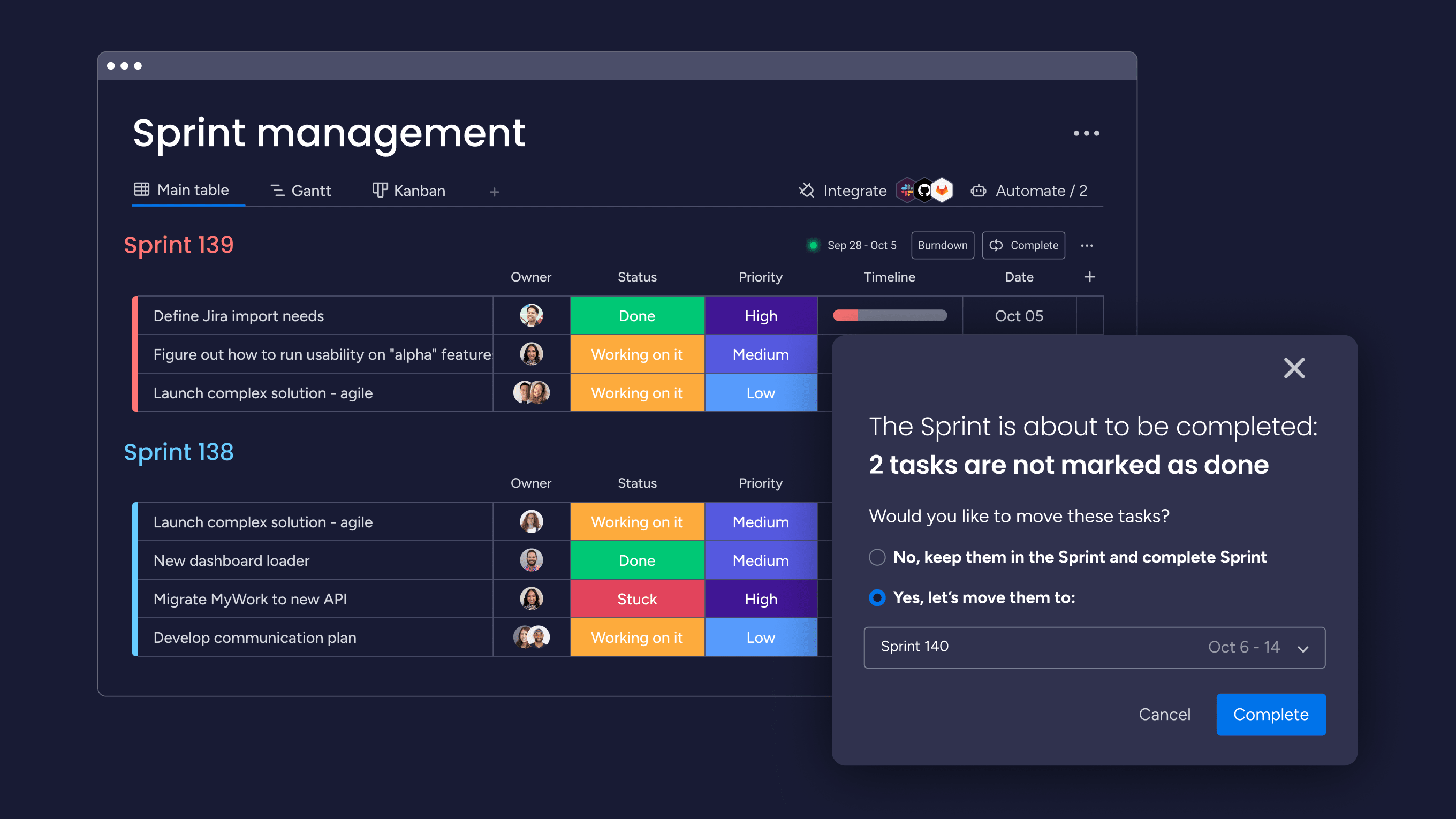
- Shave hours off repetitive tasks through smart automation. Time is an important factor of prioritization, and you can save heaps of it by setting up automated workflows based on triggers, conditions, and actions.
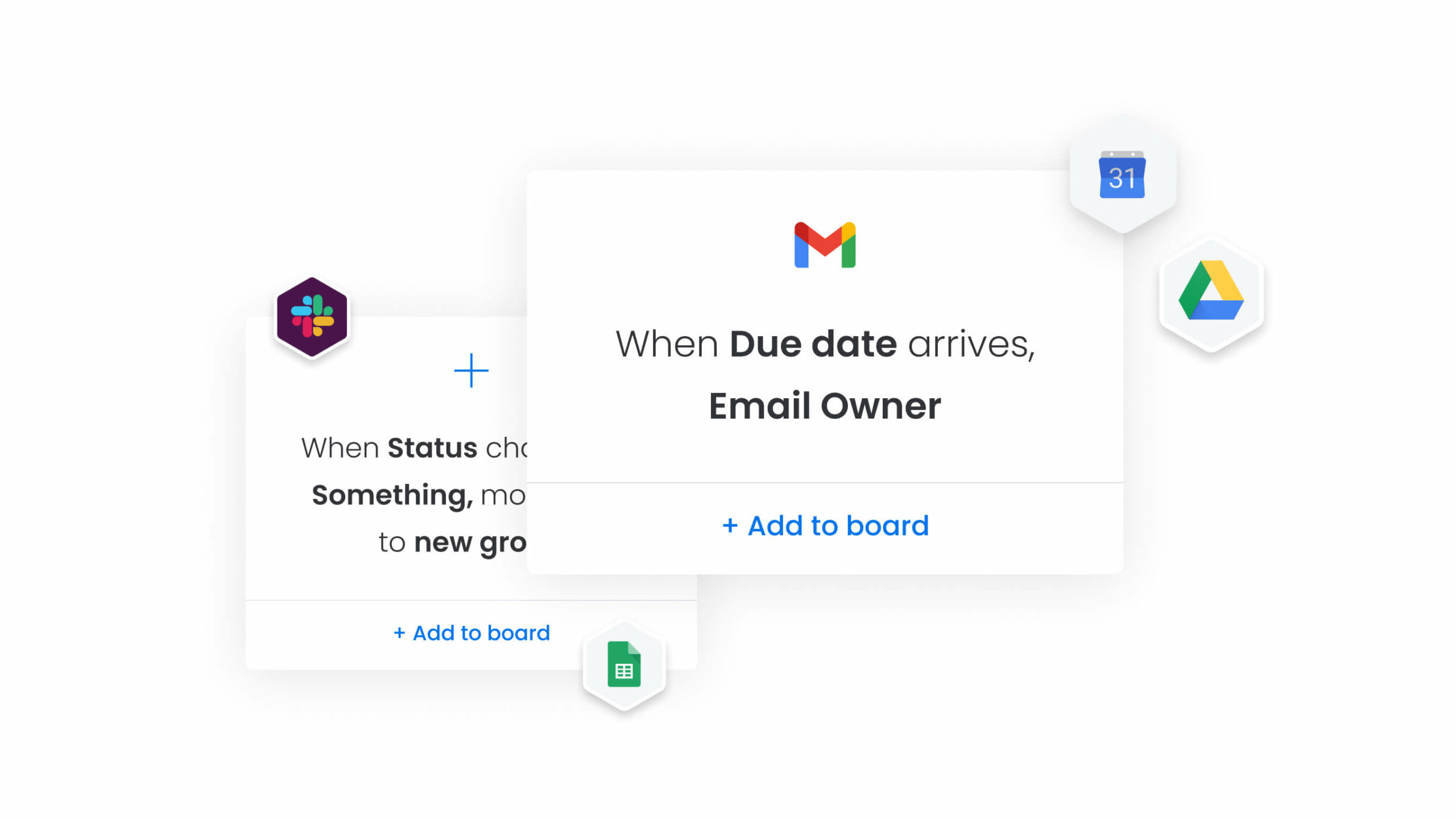
- Collaborate with product team members using shared knowledge docs. Keep essential roadmaps and strategy documentation safe and accessible in a central location so your team members can easily contribute and collaborate remotely.
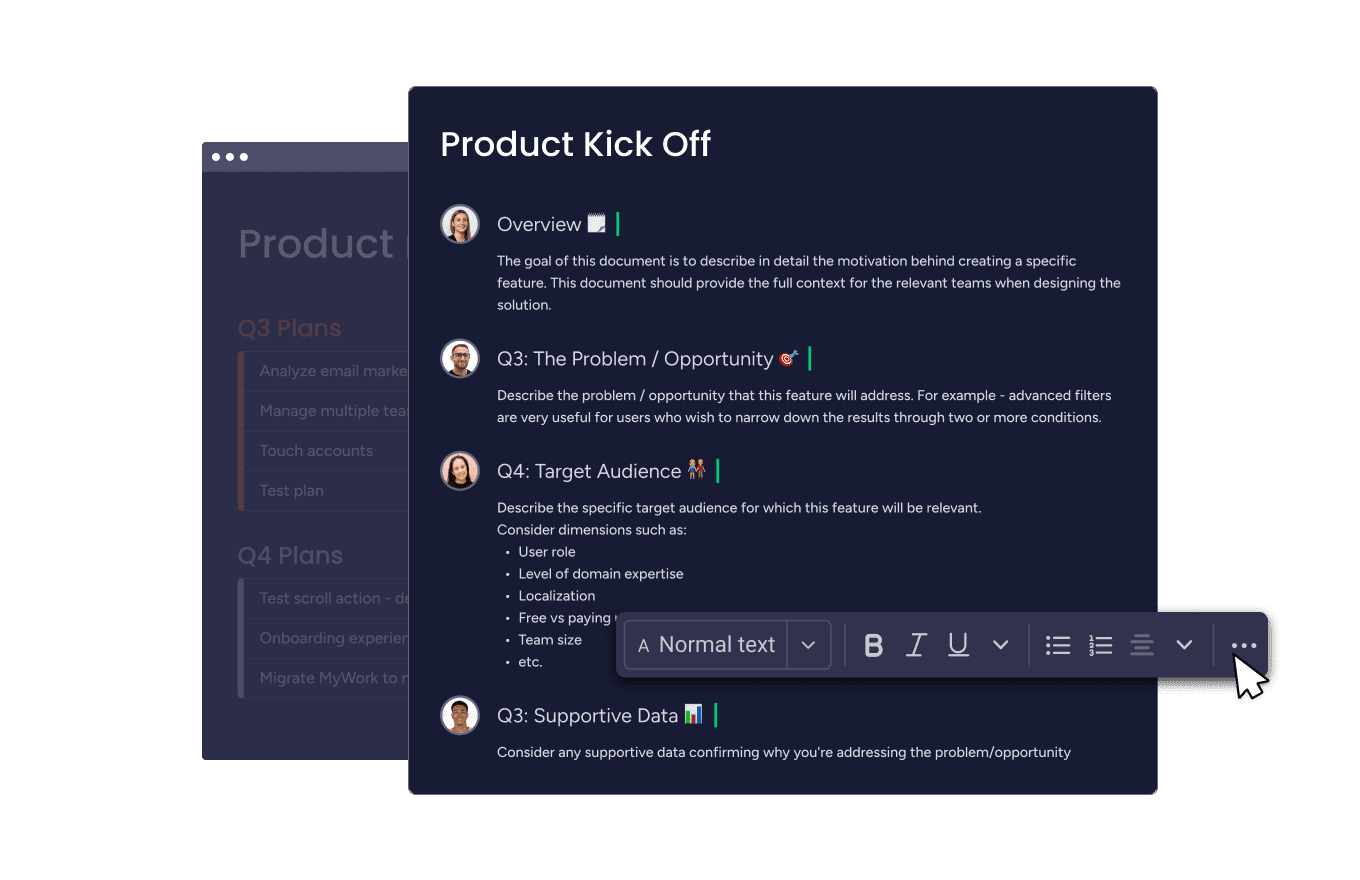
With monday dev, you can seamlessly track and manage your priorities across the entire product development lifecycle. Whether you’re evaluating features, aligning with stakeholders, or ensuring timely delivery, our platform provides the tools you need to stay organized and focused on what matters most. Take a free trial of monday dev today.
Try monday devFAQs
What is the product prioritization framework?
A product prioritization framework is a set of principles that guide your user stories by determining which tasks or features to focus on and in what order. You can use multiple frameworks depending on your goals, resources, and team dynamics.
What are the three most common prioritization methods?
MoSCoW, RICE, and the Kano model are three popular prioritization frameworks commonly used in product development.
What is the difference between MoSCoW and RICE frameworks?
MoSCoW focuses on categorizing features into subjective buckets of importance, while the RICE method uses a numerical scoring system to assess features based on multiple factors—it aims to be a more objective prioritization process.
What are the steps involved in using a prioritization framework?
Each framework you use requires different steps. As a rule of thumb, you’ll usually identify your tasks, define criteria to measure them, assign scores to them, and then rank your tasks to prioritize them.
How often should you review your prioritization framework?
Product teams should regularly review their prioritization framework to ensure it aligns with changing business goals, user needs, and market trends. The frequency of reviews will depend on the nature of your product and industry, but a quarterly review is a good starting point to identify any issues. Remember to keep an eye on any updates in the product's market and make necessary changes to your prioritization process accordingly.
Can a prioritization framework improve teamwork?
Yes, a prioritization framework can improve teamwork by encouraging product professionals to work together towards common goals, fostering a sense of team unity and accountability. Instead of just managing personal priorities, the product team as a whole comes together to achieve success.
 Get started
Get started 


